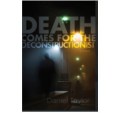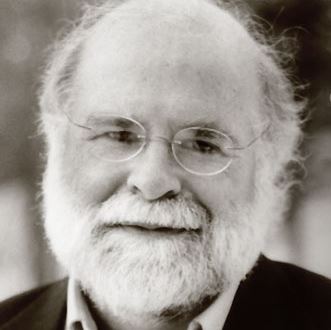Daniel Taylor’s début novel, Death Comes for the Deconstructionist, is an engrossing and satisfying whodunit. But the central character and sleuth, Jon Mote, finds himself uncovering and confronting secrets every bit as dark as the murder case he’s been asked to help solve, and the stories of those confrontations are just as captivating.
The novel opens after the murder of Richard Pratt, chair of a local university’s English Department and a bright, though dimming, star in the academic universe. Years before, Pratt was also Jon’s doctoral advisor, and his criticism of his protégé’s dissertation-in-progress (“theoretically naïve” is just one of Pratt’s disparaging descriptions of the work) helped nudge Jon toward an early exit from graduate school.
Since then, Jon has barely cobbled together a living by doing freelance research for various lawyers, the description of which offers just one example of the humor that is woven throughout the novel and that helps lighten even some of the darkest episodes:
Aware of Jon’s research skills and disappointed by the progress the police are making in investigating her husband’s murder, Pratt’s widow approaches Jon about doing some independent detective work on the crime. In their first meeting she tells him, “I believe that whoever killed Richard knew him and knew the academic world. You knew Richard, and you know about the academic world. I believe you could pick up on something the police would miss.”
Mrs. Pratt is most suspicious of one of her husband’s former colleagues, Professor Daniel Abramson, with whom Pratt had experienced “some unpleasantness” before his murder. The unpleasantness boils down to a disagreement over whether truth and falsehood, and good and evil truly exist, in literature and beyond. To Abramson, they most certainly do, but to Pratt, the consummate deconstructionist, they are empty and near meaningless categorizations.
To offer an example of Pratt’s deconstructive talents, Jon takes us back to his graduate-school days—specifically, to a class during which Pratt turned these talents on a gold letter opener whose handle is a whale: Moby Dick. Holding the letter opener up before the class, Pratt said,
The fact that the letter opener eventually becomes the murder weapon—and that Moby Dick was the subject of Jon’s doomed doctoral dissertation—makes this one of the most darkly entertaining passages of the novel, and there is much dark entertainment from which to choose. (Seeing the letter opener, years later, at the police station, Jon reflects, “Symbol of a symbol of a symbol? Perhaps, but also sharp enough to have made a very effective hole in you, sir—the revenge of simple materiality over all things theoretical.”)
As Jon’s investigation of Pratt’s murder deepens, the list of potential suspects grows far beyond Abramson to include even Mrs. Pratt. And the conclusions Jon comes to, about both the perpetrator and the crime, are both surprising and logical. Jon arrives at them after uncovering a dark secret from Pratt’s past, one that reveals deconstruction to be far more than a theoretical stance for him; instead, it’s an essential tool for personal reinvention and self-preservation.
At the same time, troubling and long-repressed events from Jon’s own past are resurfacing in his mind. These threaten his already unstable mental health and the welfare of himself and his developmentally disabled sister, Judy, who lives with Jon on a rented houseboat. The disturbing events involved Jon and Judy’s late Uncle Lester, who, years earlier, took custody of the two of them after their parents died in a car accident. Coming to terms with the damage wrought by Uncle Lester, an abusive figure who “believed more in God’s wrath than God did,” is central to Jon’s own self-preservation, and Taylor writes about this struggle vividly and movingly.
As for Judy, she truly is Jon’s co-star in the novel, accompanying him to interviews with potential suspects and offering a fresh take on the buddy-cop role. More important, she seems to be the main reason Jon holds onto his sanity:
One of my favorite aspects of the novel is the way it continually pushes back at the Pratt-favored notion that words are nothing more than empty symbols or signifiers. I’ll end with a quote from Verity Jackson, an African American English instructor whom Jon interviews in a park where, years before, Verity and her family faced discrimination and where, later, she participated in civil-rights demonstrations:
Amen.
Would My Pick be Your Pick?
If you're interested in ________, the answer may be "Yes":▪ Any novels that take a humorous look at academic life, such as Straight Man by Richard Russo, Lucky Jim by Kingsley Amis, and various works by David Lodge
▪ Murder mysteries set in academia, such as the Professor Karen Pelletier series by Joanne Dobson and the Peggy O’Neill series by M.D. Lake






